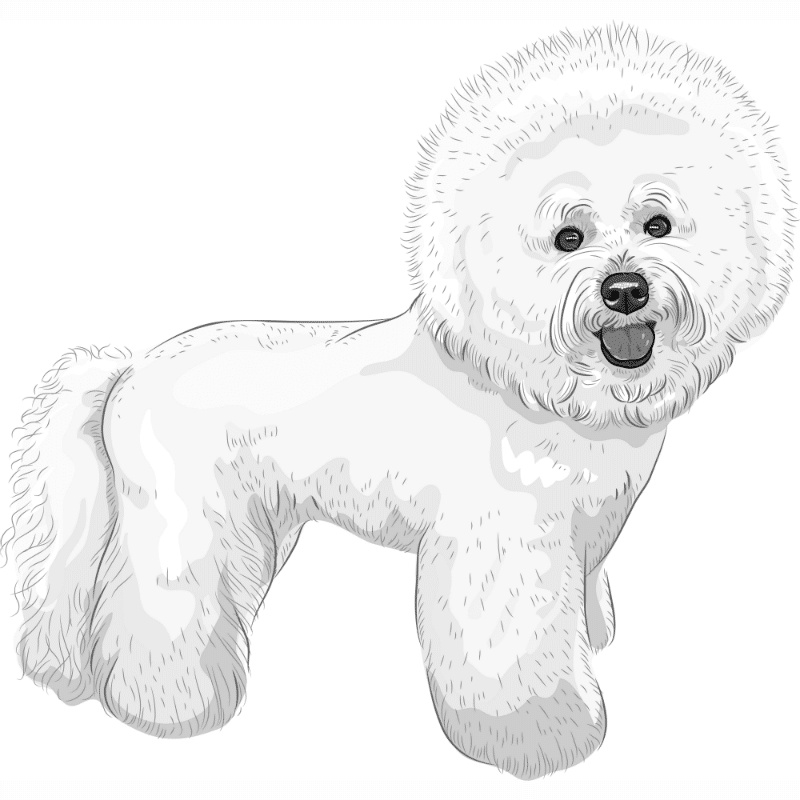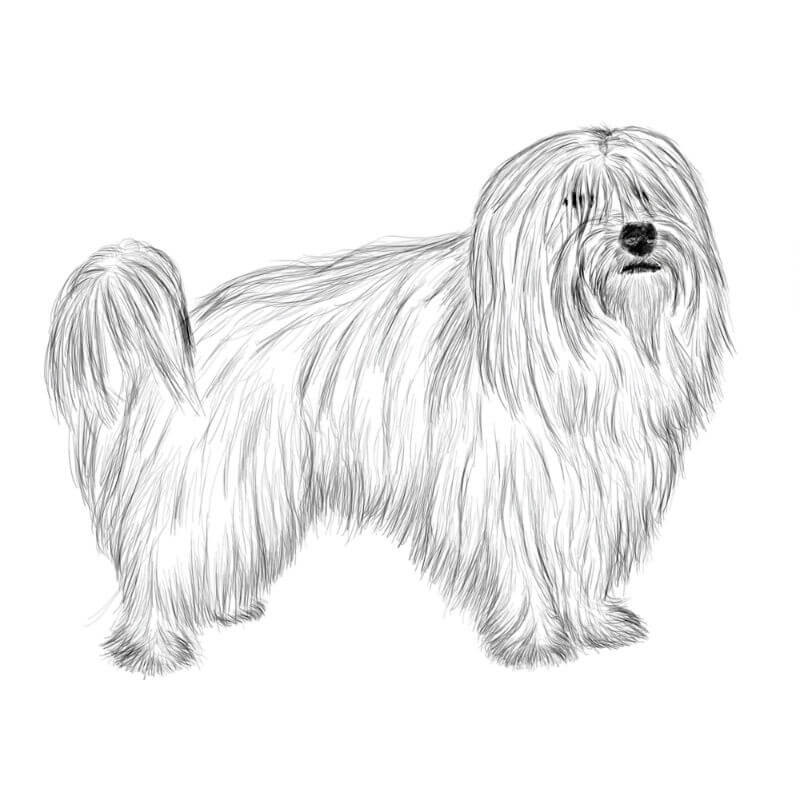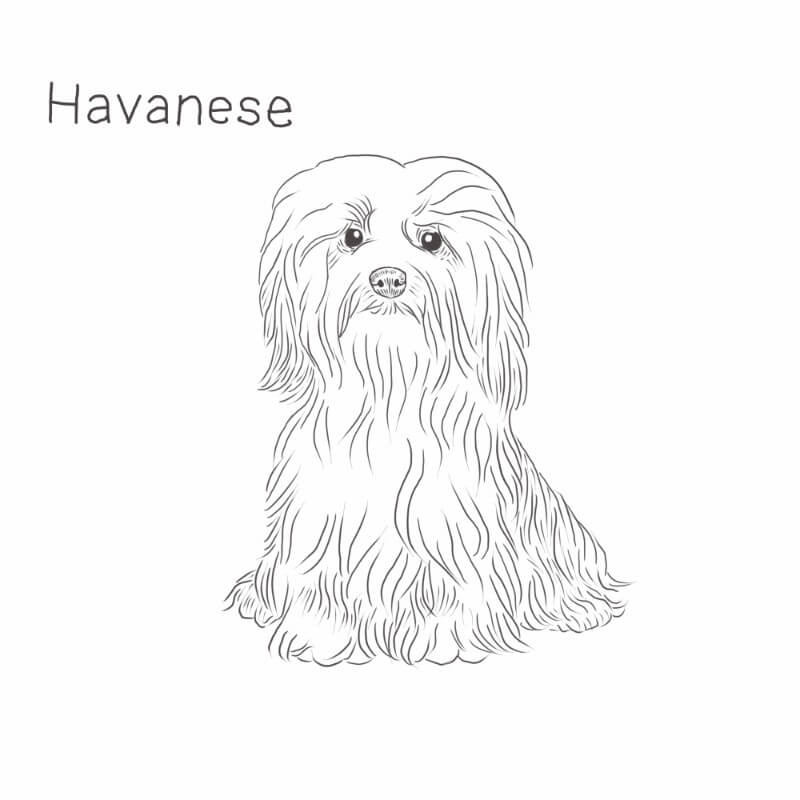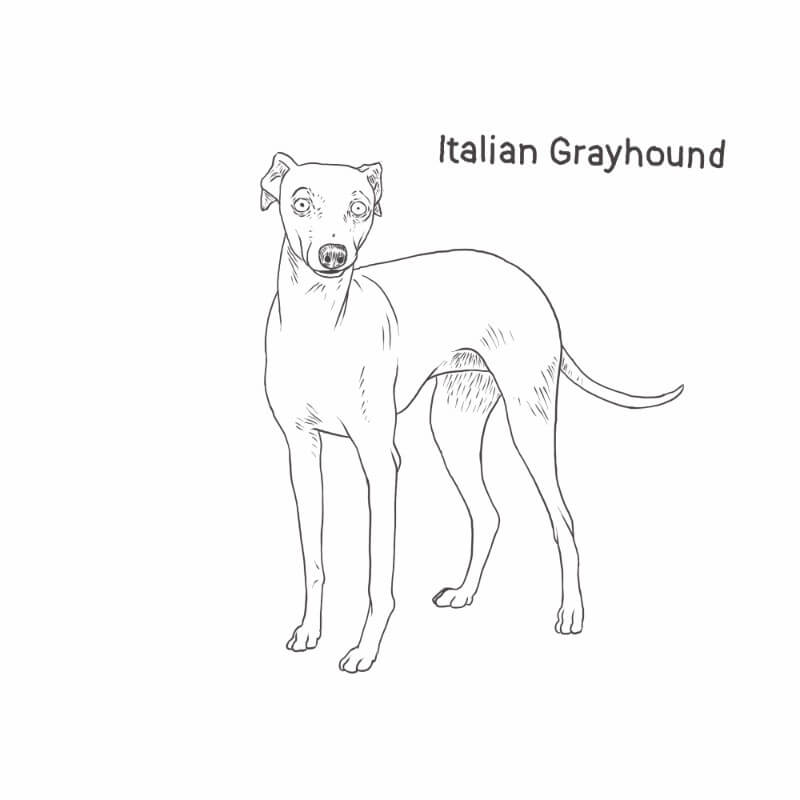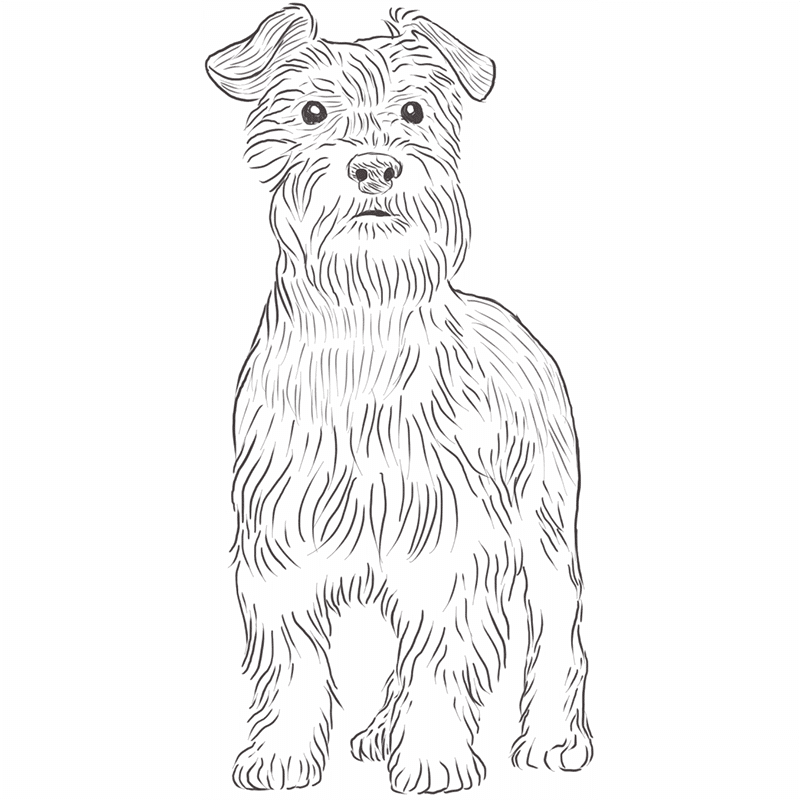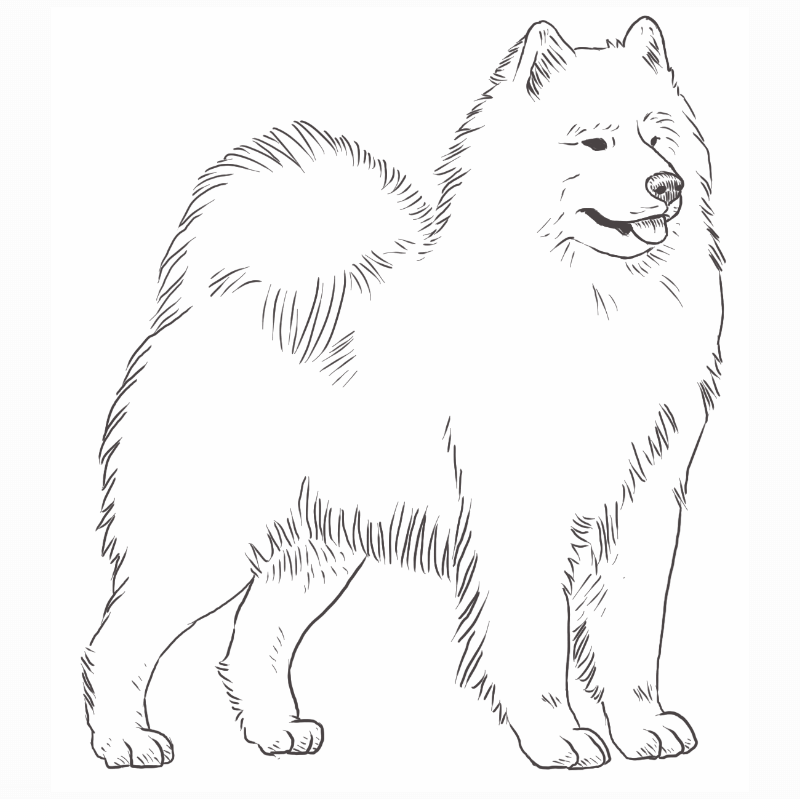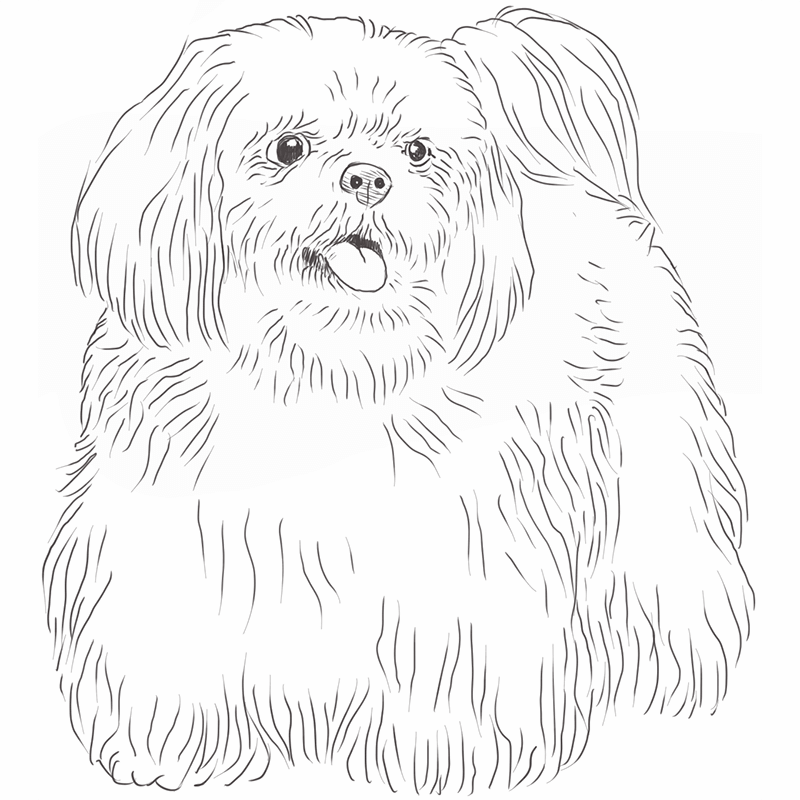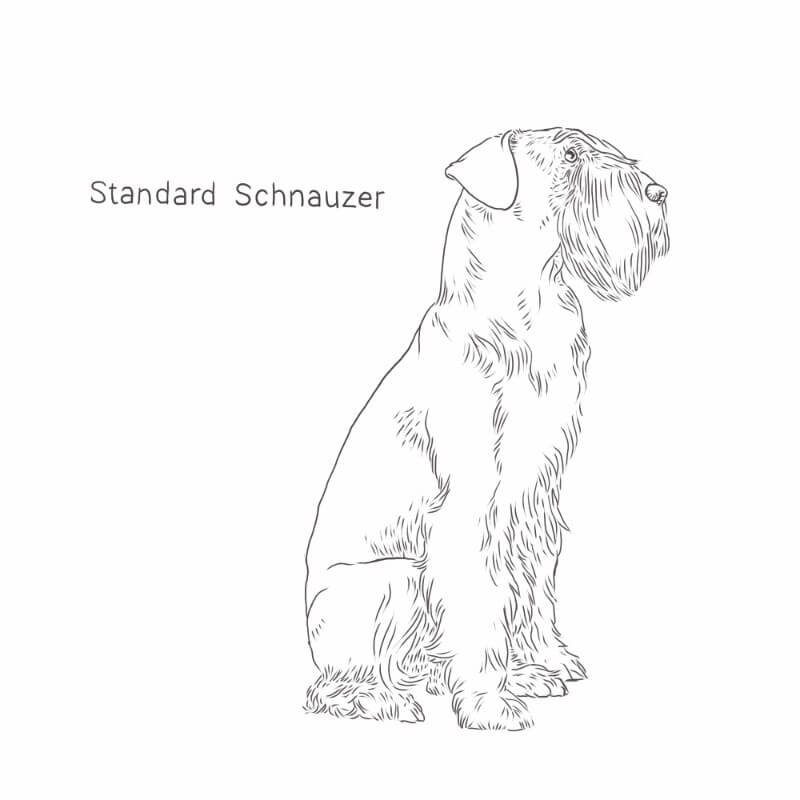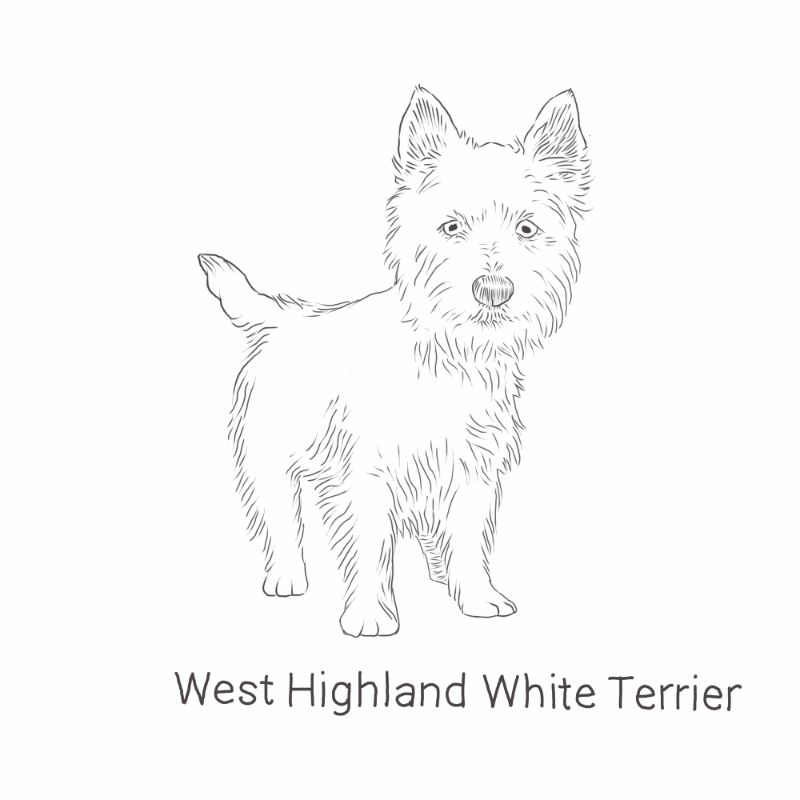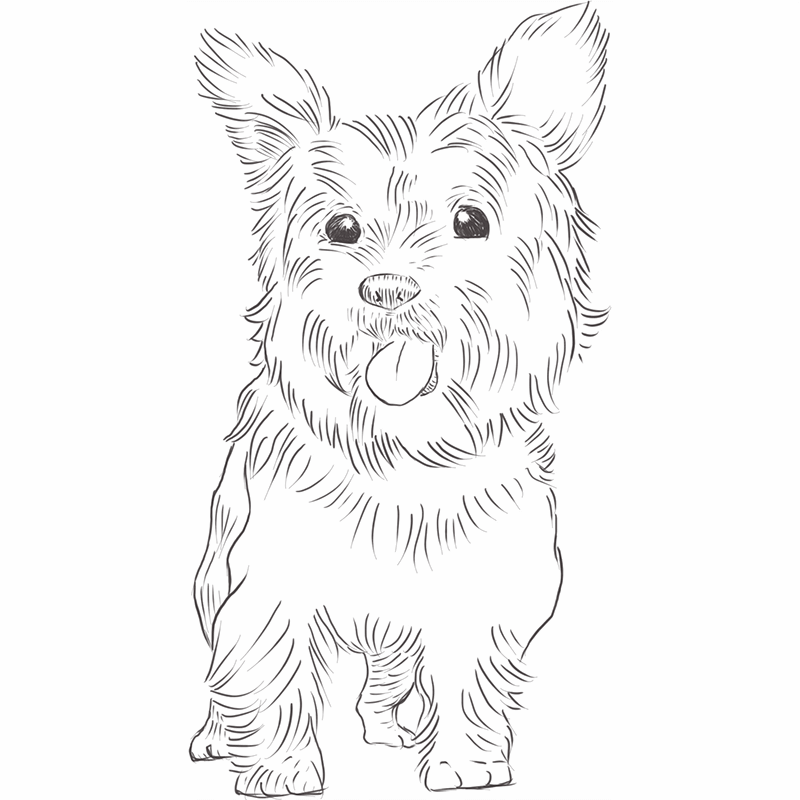Hypoallergenic Dogs Meaning: What is a Hypoallergenic Dog?
Hypoallergenic dogs are low-shedding dogs that produce less dander. This makes them good potential pets for allergy-sufferers.
Up for Debate
So are there really dogs out there that won’t make me sneeze?
Yes, no, maybe so? The argument that certain breeds can be labeled “hypoallergenic” is actually up for debate. Some scientific studies have suggested that such breeds may exist, but others have outright denied the claim.
Still, thousands of people around the world swear that hypoallergenic dog breeds do in fact make a difference when it comes to allergies.
And depending on the individual, this definitely can be true!
But before we get ahead of ourselves, let’s start with the basics.
Where Do Dog Allergies Come From?
Okay, square one. What part of a dog are people actually allergic to?
You might be inclined to say the fur, since that is obviously something that tends to fly around so prolifically.
But a dog’s fur is actually not the culprit. In reality, dog allergies come from proteins called Can f I and Can f II. These specific proteins are found in a dog’s dander, saliva, urine, and feces.
Now, the fur can play a role in carrying and releasing these allergens into the environment. But on its own, the fur is not the source of the problem.
Think of it this way: a burglar decides to steal a car and use it to rob a bank. When caught by the police, it’s the burglar that’s blamed. Not the car. Sure, the car “helped” the burglar commit the crime, so you could say that the car was also to blame...
But let’s be honest, were it not for the dude that came along and stole it, that car would still be innocently hanging out in a parking lot!
It’s the same with dog fur and allergy-causing proteins. The actual fur is not the criminal. But the dander, saliva, and waste excretions that stick to the fur are.
What Makes Certain Breeds Hypoallergenic?
So, what does all this have to do with hypoallergenic dogs?
Everything!
Certain dog breeds can be considered hypoallergenic because:
(1) they produce fewer allergy-causing proteins to begin with, and/or
(2) they do not shed fur to the extent that most other dogs do.
Okay, so let’s break that down. Obviously, producing less of an allergen is a big factor. Fewer allergens equals lower likelihood of an allergic reaction occurring.
Lower amounts of shedding is also important. As we’ve discussed, furs are the “cars” that allergens ride on as they travel up and into your nose. So fewer available “cars” means fewer fly-away allergens. Again, this lowers the chances that you’ll have an allergic reaction.
So Will A Hypoallergenic Dog Work for Me?
Now that you have a better grasp on the science of dog allergies, let’s go back to that debated question: Are certain breeds actually hypoallergenic?
Based on the above two points we just discussed, hypoallergenic dogs do exist. There are dogs out there that produce less of the offending allergens. And there are dogs that don’t shed a lot of fur.
Woohoo!
But you must also be aware: just because you get a dog that is considered hypoallergenic, does not guarantee you won’t have an allergic reaction.
This is partly because the word “hypoallergenic” does not mean “non-allergenic.”
And it’s partly because dogs are individuals, and people are individuals.
So finding a dog that won’t trigger a reaction will require some searching and experimentation. And unfortunately if you suffer from extreme dog allergies, you may never be able to find a dog that will allow you to live completely allergy-free.
For instance, even though Poodles are considered hypoallergenic, it is possible for you to react to one Poodle, but not to another.
And surprisingly, the same can go for non-hypoallergenic dogs. For instance, your German Shepherd may not cause you issues, but your neighbor’s might.
This is because individual dogs--even within breed families--produce different amounts of the allergy-causing proteins.
So, to ensure you won’t have an allergic reaction to a future pet, be sure to spend a good chunk of time with potential candidates before bringing one home.
That said, if you suffer from allergies but still want to have a canine companion in your home, begin your search with the hypoallergenic breeds. You’re most likely to find the perfect match among this group of pups.
And I hope you do find the perfect dog that won’t give you the sniffles (or that at least won’t give you as many). Because everybody deserves to have a cute, happy, fun-loving little fur-iend!
Which Dog Breeds are Considered Hypoallergenic?
Okay, now here’s the part we’ve all been waiting for. Which breeds actually make the list when it comes to being hypoallergenic?
Well, the answer is A LOT.
So let’s go ahead and reveal the superstars! This list isn’t exhaustive, but I’ve included some of the most popular hypoallergenic breeds:
- Affenpinscher
- Afghan Hound
- American Hairless Terrier
- Bichon Frise
- Chinese Crested
- Coton de Tulear
- Havanese
- Irish Water Spaniel
- Lhasa Apso
- Maltese
- Poodle (all sizes)
- Portuguese Water Dog
- Schnauzer (all sizes)
- Shih Tzu
- Soft Coated Wheaten Terrier
- Scottish Terrier
- Spanish Water Dog
- West Highland White Terrier
- Yorkshire Terrier
Are All “Fill-in-the-Blank” Mixes Hypoallergenic?
In recent years, what some may call hypoallergenic “designer” dogs have come into the spotlight.
These dogs are usually mixes of two or more different breeds. And sometimes these dogs can indeed be considered hypoallergenic.
For instance, if you mix a Poodle with a Yorkshire Terrier, the resulting Yorkie-poo pup would meet the criteria for being hypoallergenic.
Why? Because both the Yorkie and the Poodle are considered hypoallergenic breeds. And two hypoallergenic breeds equals hypoallergenic puppies.
But things can get complicated when you start mixing hypoallergenic dogs like Poodles and Bichons with non-hypoallergenic dogs such as Labradors and Cavaliers. (Often such mixes will be called things like Labradoodles, Cavachons, and Cavapoos.)
The resulting puppies from such 50/50 mixes are unpredictable. Some may indeed have inherited the coveted, so-called “hypoallergenic gene” for lack of a better term. Others will have a mix of hair-types. And still others will shed just as much as their non-hypoallergenic parent.
It just depends.
There are also breeders that specialize in multi-generational mixes. For instance, puppies may have a great-great grandparent that was a purebred Golden Retriever. But all other individuals in their family tree may have been purebred Poodles or Goldendoodle mixes themselves.
With such breeding tactics, the chances that a puppy will be non-shedding and hypoallergenic are much, much greater.
However, you should still approach such mixes with some level of caution. Just because a particular mixed breed dog is advertised as hypoallergenic does not necessarily mean that he will be.
So ask lots of questions, do lots of research, and be very informed before bringing home one of those irresistibly cute “doodle-type” mixes.
How Else Can I Reduce My Allergy Symptoms?
Depending on your sensitivity, a hypoallergenic dog may not cause you any problems at all. Or it may still trigger some reactions.
If you’re experiencing allergy symptoms around any dog, there are a few things you can do to help reduce symptoms.
Size and Number
Size has a lot to do with the amount of dog allergens being introduced into your home. The larger the dog, the more allergens it has to release into the hair.
On the other hand, smaller dogs won’t produce as many allergy-causing proteins. They have tinier puddles of pee, smaller amounts of drool, less dander…
You get the idea.
And along with size, number is also a factor.
Having five small dogs running around your house really won’t be that much different than having one large dog.
And multiple large dogs--well, that’s definitely going to increase the number of allergens lurking around your home.
Pet Maintenance
Keeping up on grooming is probably the most important thing you can do to reduce dog allergens.
For instance, regularly brushing out your pup’s coat can help rid him of loose hairs and excessive dander.
But since the actual act of grooming does tend to stir up allergens, it’s best to have someone else in the family who isn’t allergic do the brushing. And, weather permitting, grooming should be done outside so as to not release those extra allergens back into your home.
Giving your dog frequent baths can also help. Soap and water will wash out excessive dander as well as outdoor allergens that may have clung to your dog’s coat.
But when it comes to baths, you’ll have to find the perfect balance between underbathing and overbathing.
Not bathing your pup enough can obviously lead to allergen build-up. But bathing your dog too often can dry out their skin and lead to even more loose dander.
It’s a tricky balance to find. And a lot of it will depend on your individual dog. Some dogs can do fine with a weekly bath while others cannot. So it may take some experimentation to find a bath schedule that will work for both you and your pup.
Home Maintenance
Home maintenance is another important step you can take to combat dog allergies. Of course, you’ll want to keep up on the general house cleaning you’re already doing.
But bringing home a dog will introduce a few more steps to the cleaning process. For instance, you’ll want to wash your pet’s bed on a regular basis, as well as his toys.
These things can become allergen reservoirs, so make sure they take a trip through the washing machine on occasion. Pet bedding should be cleaned on a weekly basis, but toys can go a few weeks before needing a wash.
You may also wish to create a dog-free zone in your home where you restrict access to your pup. For instance, not allowing your dog into your bedroom can help keep allergens in that area at bay.
Changing air filters frequently is also a good idea. And investing in HEPA filters and vacuums will also be helpful.
Are Hypoallergenic Dogs High-Maintenance?
In one word, YES! Hypoallergenic dogs are VERY high maintenance.
At least when it comes to grooming.
If you’re going to get a hypoallergenic dog, it is crucial that you understand the grooming needs of the particular breed you’ll be getting.
Below are some general guidelines for grooming a hypoallergenic dog. But be sure to check out how to groom your particular breed of dog, as even in the hypoallergenic category, different breeds do have specific needs.
Fluffy Hypoallergenic Dogs
Okay, so the grand majority of hypoallergenic dogs come with fur all over their bodies. And as a general rule, these pups have hair comparable to a human’s. That is, instead of shedding endless amounts of fluff, these dogs’ hair typically grows more or less continuously.
Of course, they’ll still lose some hair--even people shed a few hairs every day! But most fluffy hypoallergenic dogs are going to have coats that grow long and don’t shed hardly at all.
Which means: high maintenance.
Why?
Because like humans, these dogs will typically need their hair brushed on a daily basis to avoid tangles and matting. And they’ll usually need to visit the groomer every four to six weeks for a haircut.
So be aware of the time commitment that comes with these types of dogs. Compared to shedding breeds, fluffy hypoallergenic pups are typically a lot more work when it comes to grooming.
Hairless Hypoallergenic Dogs
While not as common, a variety of hairless dogs do indeed exist.
But just because they don’t have hair, doesn’t mean they don’t need care.
Like people, these dogs’ exposed skin needs special attention. Especially since their hairlessness makes them more prone to allergies, skin irritations, acne, and sunburn.
Depending on the pup, a hairless dog may need special acne lotion or other skin treatments. And doggy sunscreen is a must for all individuals when spending time in the sun.
Hairless pups will also need to be bathed more frequently. And they also may require a moisturizing lotion made for dogs to keep their skin from getting too dry.
Are Hypoallergenic Dogs More Expensive?
The honest answer? Most likely.
Purchase Price
When it comes to the base purchase price of a hypoallergenic dog, numbers vary widely.
In general, a hypoallergenic dog will be more expensive simply because these breeds have been in higher demand in recent years.
But again, it depends on the dog. And on the circumstances.
Heck, even within a breed, prices can vary immensely. For instance, a Bichon Frise can cost anywhere from $250 to $2,500. Which is a pretty wide range for just ONE breed.
There’s about a million factors that go into initial cost:
- Are you adopting from a shelter? (Yes, purebred hypoallergenic pups can be found in shelters, so don’t pass up this option.)
- Are you purchasing from a breeder? What’s that breeder’s reputation?
- Is AKC registration important to you?
- Are you looking for a purebred or a mixed breed? Do you want one of those “designer” dogs?
- How popular is the breed you want?
- How common is the breed you want?
- Where do you live?
- Is your heart set on a puppy or would you be willing to take in an adult dog?
As you can see, there’s a ton of factors that affect base cost.
So for now, we’ll just go with this conclusion: cost varies, but chances are a hypoallergenic dog is going to cost you more than a non-hypoallergenic breed.
The Cost of Upkeep
In general, you can expect the price to care for a hypoallergenic dog to be comparable to the cost of a non-hypoallergenic dog of a similar size.
Except with a few additional costs...
The main one? Grooming.
Most dog owners that have non-hypoallergenic dogs generally don’t need to take their pups to the groomers all that often. This is because most people opt to brush and bathe their dog on their own.
But when it comes to hypoallergenic dogs, trips to the groomer become much more imperative. Because, as we’ve discussed, these dogs typically need regular haircuts.
And just one trip to the groomers can cost anywhere between $30 to $90 or more. Which adds up considering you have to take your dog in for a haircut every month or two.
Unless…
You’re up for a challenge!
Some dog owners opt to clip their dogs themselves, which is definitely something you can learn to do. You’ll just need time, patience, practice, and access to YouTube. (And of course a good-quality set of dog clippers and supplies.)
Assuming you take this route, the cost of upkeep should be fairly comparable to that of caring for a non-hypoallergenic pup.
It just depends on whether you're up for the task!

